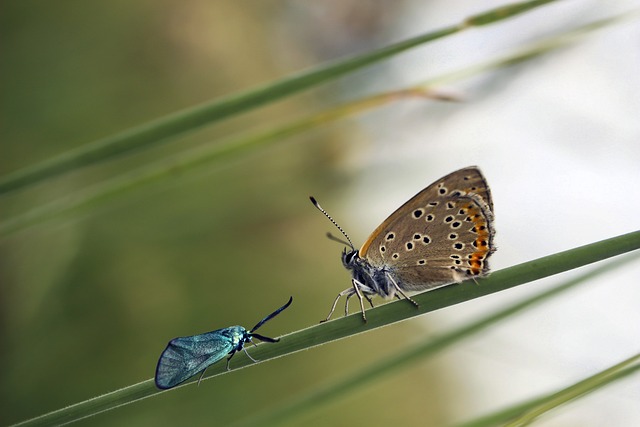Psocids, common book lice found indoors and outdoors, pose health risks beyond their presence. Traditional chemical pesticides offer quick fixes but harm health and the environment. Eco-friendly solutions like biological control and plant-based repellents (e.g., neem oil) target psocids safely and sustainably. Proactive measures including inspections, ventilation improvements, sanitation, and sealing entry points prevent infestations. Combining these strategies promotes effective, eco-conscious psocid infestation removal.
Psocids, also known as book lice, can quickly turn into a household pest, causing damage to books, fabrics, and other organic materials. This article explores eco-friendly solutions for safe psocid removal, offering an alternative to traditional methods that often rely on harsh chemicals. We delve into understanding psocid infestations, comparing traditional with eco-friendly techniques, providing sustainable implementation tips, and suggesting preventive measures for long-term protection against these pesky insects.
Understanding Psocid Infestations and Their Impact
Psocid infestations, while often overlooked, can have a significant impact on both indoor and outdoor environments. These tiny insects, also known as book lice, are common in various settings, from homes to gardens. They feed on organic matter, including plant debris, stored food products, and even textile fibers, which makes them a nuisance in many contexts. Understanding the nature of psocid infestations is crucial for effective removal strategies.
The impact of psocid infestations extends beyond their presence alone. As they feed, psocids can leave behind debris and secretions that contribute to a messier environment. Moreover, some species are known carriers of diseases, posing potential health risks to humans and pets. Effective psocid infestation removal is therefore essential for maintaining a clean, safe, and healthy living or working space.
Traditional vs. Eco-Friendly Removal Methods
When it comes to dealing with a psocid infestation, there are two primary approaches: traditional methods and eco-friendly solutions. Traditional removal techniques often involve powerful pesticides and chemicals that can be harmful to both the infested area and the environment. These chemicals may also pose risks to human health and other beneficial insects.
In contrast, eco-friendly removal methods prioritize natural and non-toxic alternatives. Solutions like biological control, where beneficial insects are introduced to eliminate psocids, or the use of plant-based repellents and essential oils, offer safe and sustainable ways to manage psocid infestations. These methods not only protect the environment but also promote a healthier balance in ecosystems, making them ideal choices for those concerned about both their indoor spaces and the broader ecological impact of pest control.
Implementing Safe and Sustainable Solutions
When dealing with a psocid infestation removal, it’s crucial to adopt safe and sustainable solutions that not only eliminate the pest but also protect your environment. Traditional chemical pesticides can be harmful to both humans and wildlife, leading to long-term ecological imbalances. Instead, opt for eco-friendly methods like using essential oils, such as neem or peppermint oil, which have natural insecticidal properties and pose minimal risk to non-target organisms. These organic alternatives not only reduce environmental impact but also help preserve the biodiversity surrounding your living or working space.
Implementing these safe practices requires a shift in mindset towards embracing natural solutions. For instance, maintaining proper sanitation, ensuring good ventilation, and reducing moisture levels can significantly deter psocids from thriving. Additionally, using physical barriers like silicone or cotton seals around entry points and regularly inspecting for signs of infestation early on can prevent the need for extensive chemical interventions. By combining these sustainable strategies, individuals and businesses alike can effectively manage psocid infestations while upholding ecological responsibility.
Preventive Measures for Long-Term Protection
To effectively manage and prevent a psocid infestation removal, it’s crucial to implement preventive measures that offer long-term protection. Starting with regular inspections, homeowners and businesses should conduct thorough checks for any signs of psocids, especially in areas prone to moisture accumulation and organic material buildup. Addressing these potential breeding grounds promptly can significantly reduce the likelihood of future infestations.
Implementing eco-friendly practices like proper ventilation, maintaining indoor humidity levels, and using natural repellents such as neem oil or citrus extracts can serve as effective barriers against psocids. Additionally, sealing entry points, repairing leaks, and ensuring proper sanitation routines are essential steps to prevent these pests from returning. By combining proactive strategies with environmentally conscious solutions, it’s possible to achieve a safe and sustainable psocid infestation removal while mitigating the need for harsh chemicals.
In addressing psocid infestation removal, adopting eco-friendly solutions offers a sustainable and safe approach. By understanding these pests and their impact, we can make informed choices between traditional methods and greener alternatives. Implementing these solutions, combined with preventive measures, ensures a harmonious coexistence with nature while keeping homes and spaces free from psocid invasions. For effective long-term protection, integrating eco-conscious practices into our pest control strategies is both beneficial and essential for a healthier environment.
